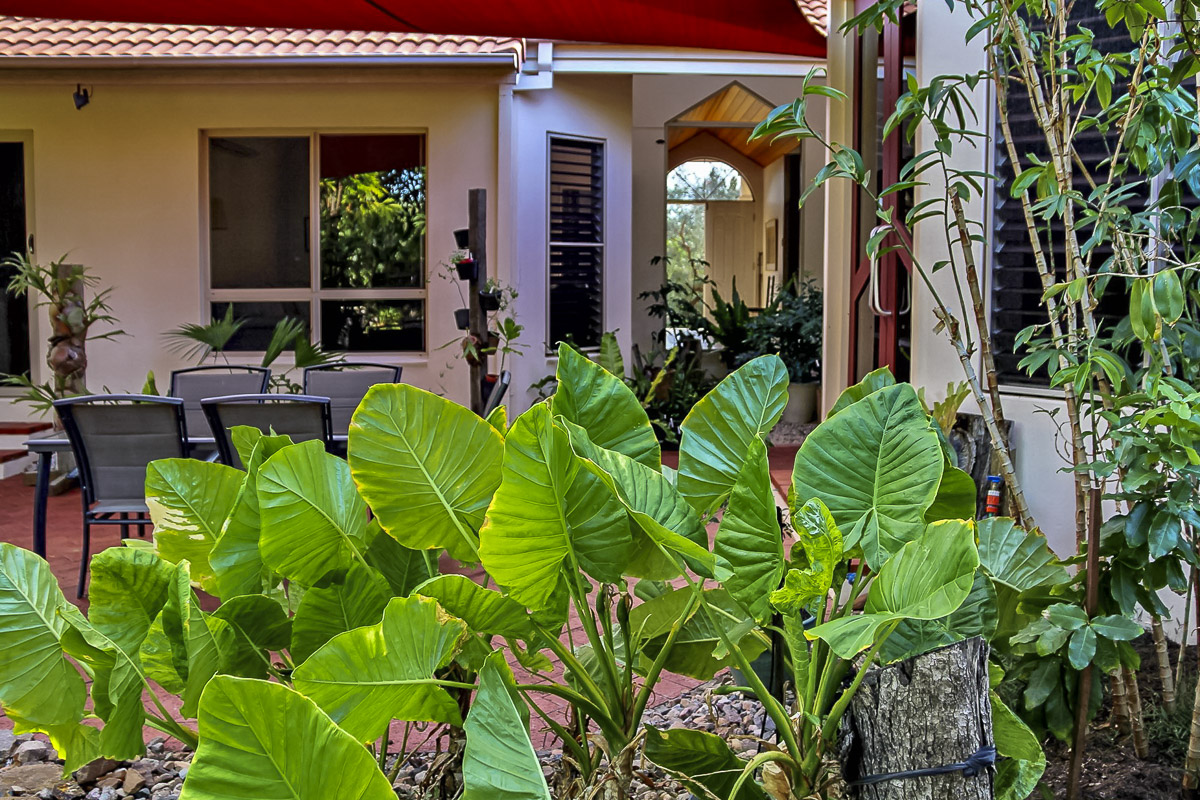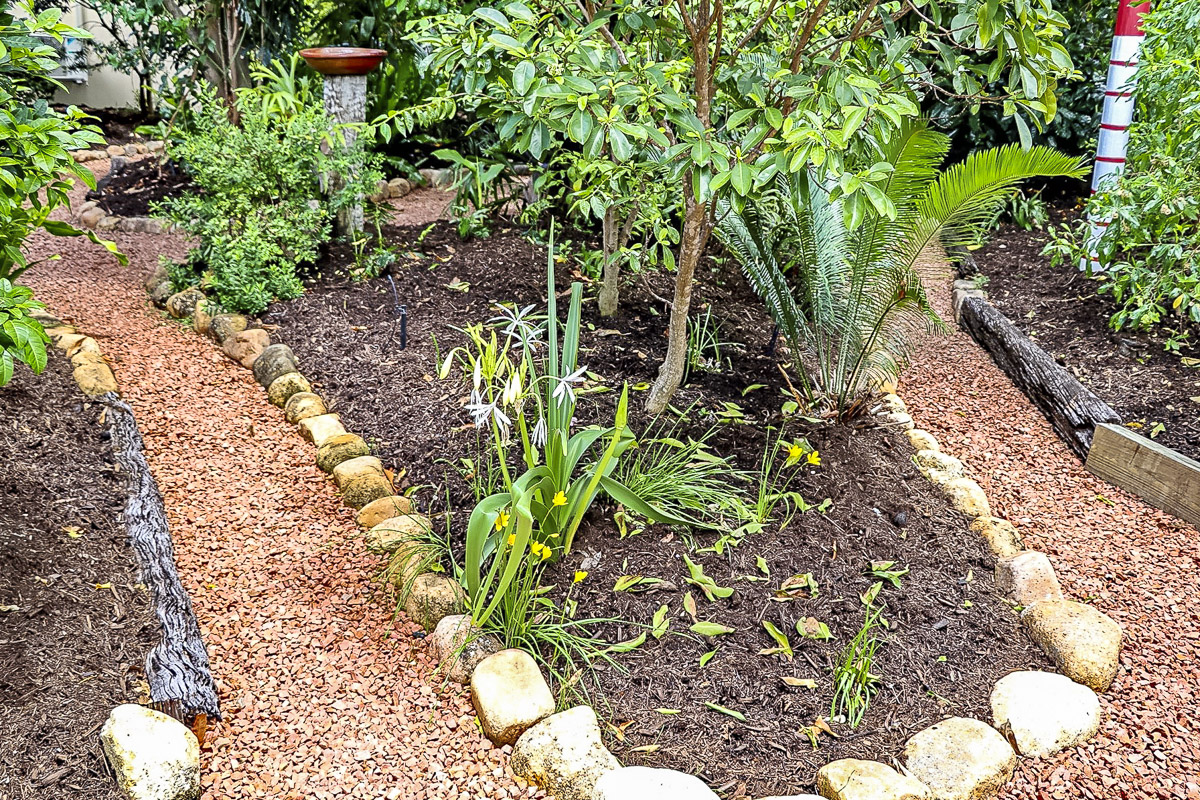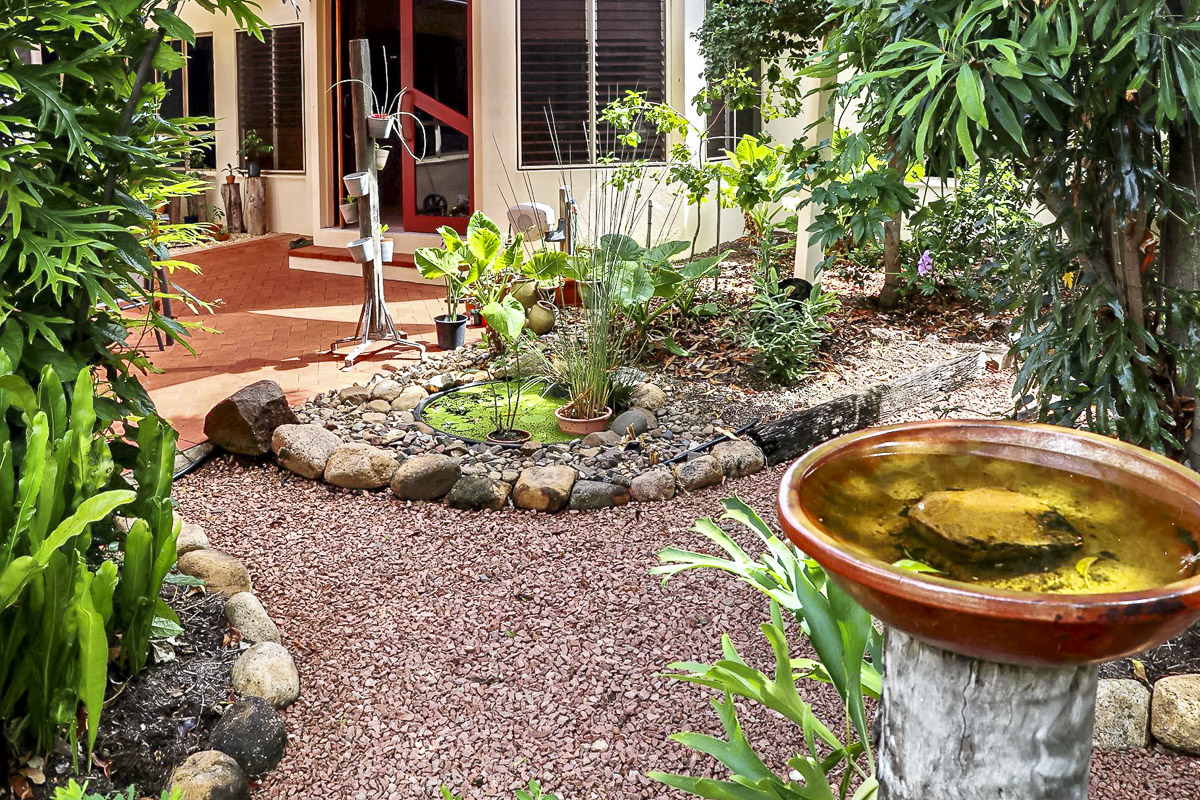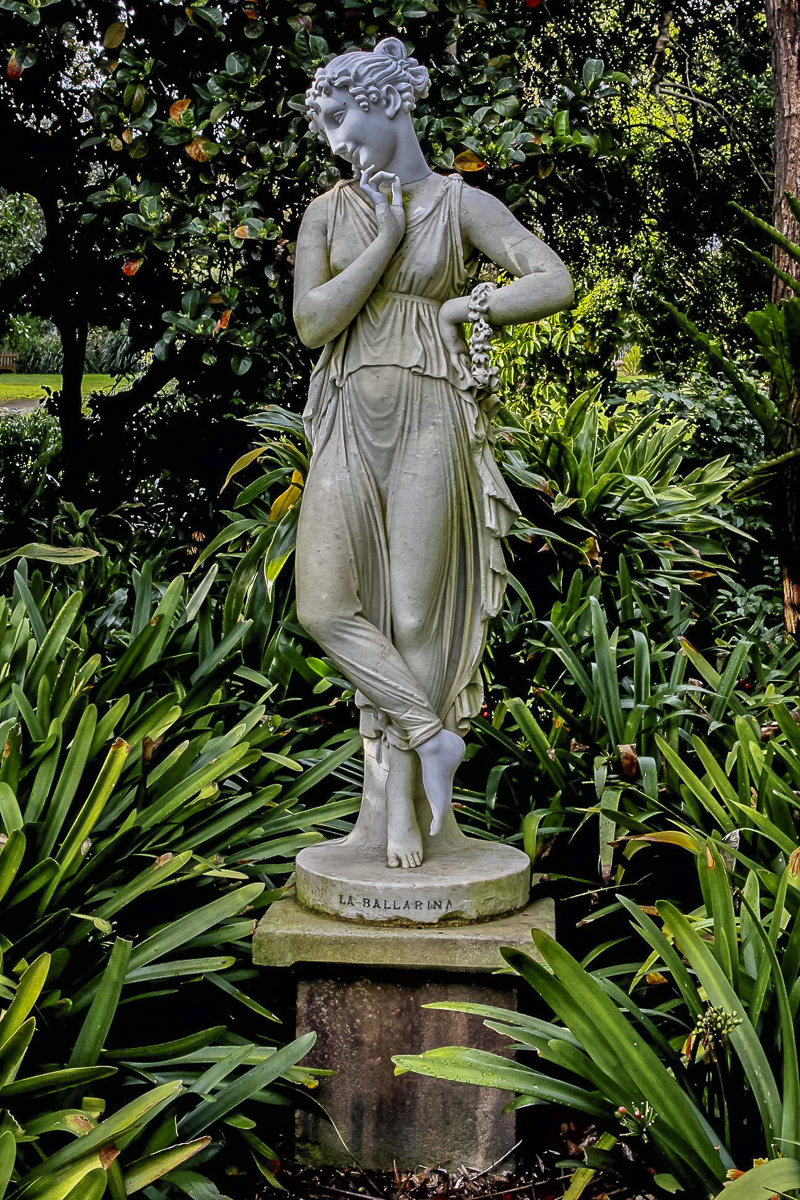Here is the story of the evolution of my gardening in my Townsville garden.
Where I started
Originally from northern England my wife and I spent 5 years in Tucson, Arizona before arriving in Townsville North Queensland in 1986. So, the change in environment couldn’t have been more spectacular.
Townsville at that time was called ‘Brownsville’, but there were glimpses in the wet season of vigorous tropical growth. I always remember the luscious expanses of ‘buffalo grass’ and the deep shade of mango trees in mystifying tropical humidity.
I started gardening in one of those quarter acre blocks in an old, established suburb. The soils were typically deep clay, and I began with showy tropicals such as Heliconias. Not only did this give quick results but I found that within a short space of time the vigorous root and rhizome activity brought in worms by the bucketful. This converted the soils wonderfully.

An old-time neighbour had a garden that doubled as a tropical fruit tree arboretum. It was a wonderland of dark leaves and strange fruits that he generously shared. So, my garden lent in that direction for some time, augmenting the existing Common Mango and Bowen Special.
Evolution towards natives
By 2000 I had moved house (another generous quarter acre) and was well on the road to working with native plants in my new garden. I had long wanted to identify native trees whose abundance provides the backdrop to our surrounding landscape. This led me to the wonderful world of bushwalking off track.
My garden slowly changed. It evolved from native plants bought from nurseries to plants which I had seen and admired in their native habitat. This reflected a greater understanding of local environments.


Showcasing the Dry Tropics
The front garden now has only plants of the Dry Tropics. My intention is that once established they will need no watering. I mostly have local plants such as Acacia chishomii with its showy canopy of golden yellow spikes, but I do make exceptions. The fabulous red flowering Cape York tree, Xanthostemon youngii, and the bizarre Macropteranthes montana, from way out Irvinebank way.
At the back of the house a larger area showcases a collection of dry Tropics ‘rainforest’ plants. The shady effect creates a microclimate and reduces the need for water.
Successful local plants that I have introduced include:
- Glycosmis trifoliata, a small handsome tree with attractive berries
- Hedraianthera porphyropetala, a shrub with dazzling small red star like flowers
- Wrightia versicolor, an unusual small tree in Apocynaceae with splendid but short-lived flowers
- Backhousia tetraptera!

Appreciating the plants cultural heritage
Apart from my interest in plants for their aesthetic qualities, I an interested in their history. For instance, Persoonia falcata, is a fabulous flowering local plant that I have so far been unable to cultivate. One can learn the meaning of the scientific name, and it is known by an indigenous name, ‘geebung’, whose fruit was ‘greatly relished’.
It is a member of the Proteaceae family, with a history that can be traced back 150 million years. To have such a plant in your garden gives a lineage of an almost unimaginable time span.
Townsville surrounded by mountains
Despite its ‘industrial’ reputation, Townsville is blessed by being surrounded by large areas of mountainous country which has resisted development. These areas are largely reserved as National or Conservation parks.
My bushwalking led me to explore large parts of this area, particularly south of town at Cape Cleveland and the foothills of Mt Elliot. I began to wonder how differently this country must have been viewed by the indigenous peoples that lived here for tens of thousands of years.
There is considerable evidence of Aboriginal presence, mainly in the form of rock art. However the demise of their traditional life was so sudden that very little of their cultural beliefs was recorded.
With a little diligence, there is much that can be learnt about the ‘rich cultural world and sentient landscape’.


I increasingly wanted my garden to reflect the local native flora, history and cultural richness that I witnessed. But how do I represent my appreciation of those experiences in a relatively small garden?
Using the rock art images and colours I started using poles painted with Aboriginal motifs as a focus for my growing appreciation of the long history and cultural significance of the landscape. I also wanted to promote a respect of culture and country for us all.
This development has come as a surprise to me – the result of a natural progression. I am very pleased with the result – more so than I would have been by following neo-classical fashion and displaying ‘La Ballerina’!
For more information on tropical native plants, visit the native plants society for Queensland, Native Plants Queensland.
 Australian Native Plants Society (Australia)
Australian Native Plants Society (Australia)












